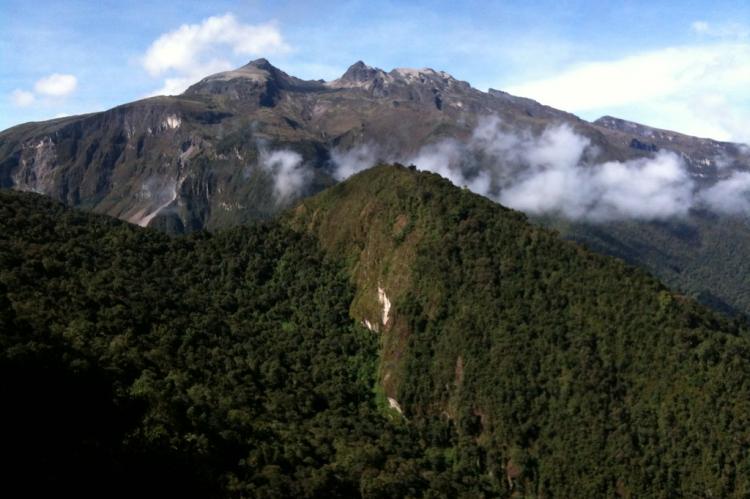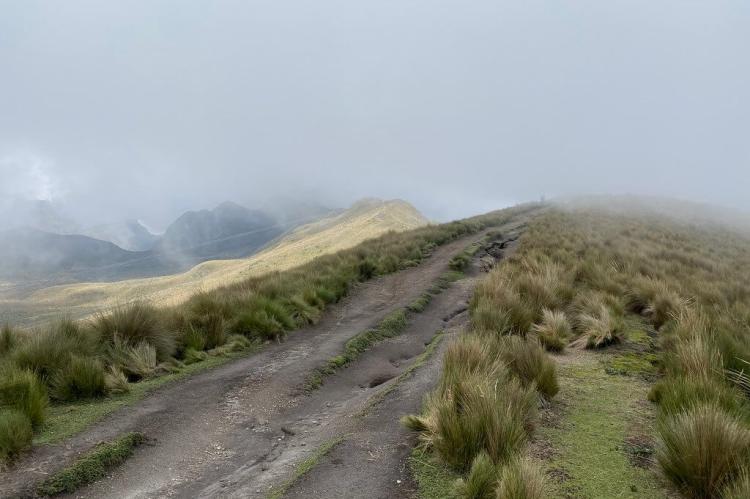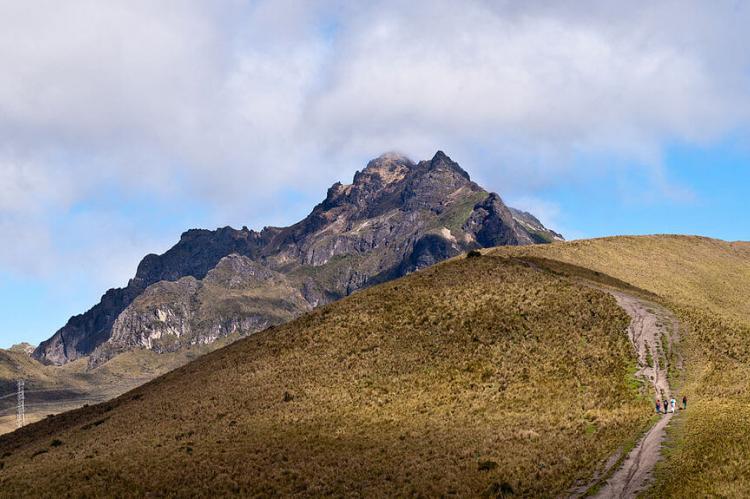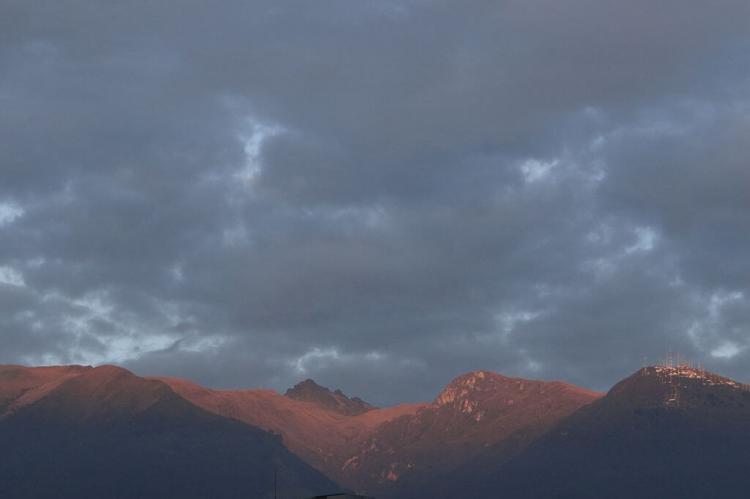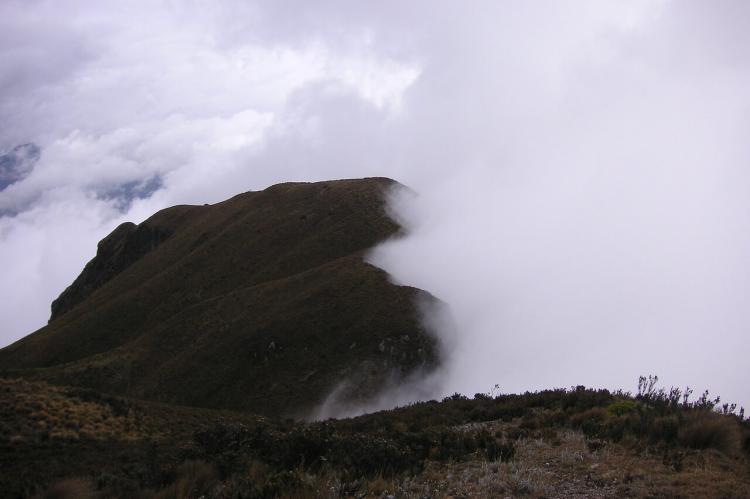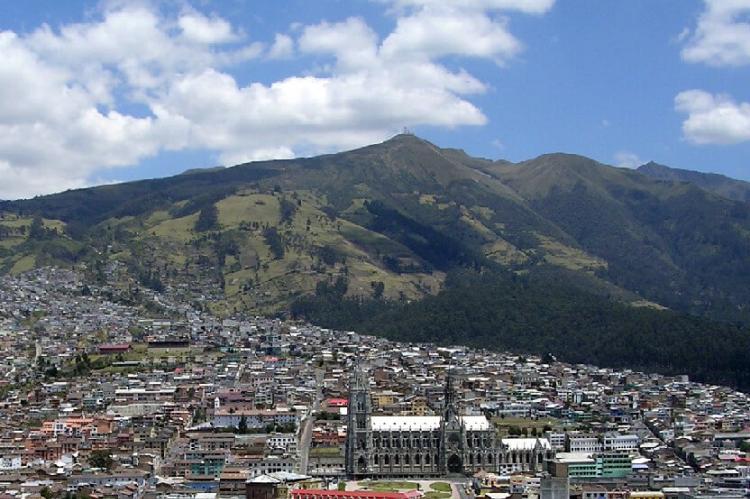The Chocó Andino de Pichincha: Ecuador’s Biodiversity Frontier
Nestled in Ecuador's northern region lies a pristine wilderness teeming with biodiversity and cultural heritage—the Chocó Andino de Pichincha Biosphere Reserve. Encompassing diverse ecosystems, the reserve is a sanctuary for an astounding array of plant and animal species, many endemic or threatened.
Chocó Andino de Pichincha Biosphere Reserve: Exploring Ecuador's Natural Treasure
Nestled in Ecuador's northern region, just northwest of Quito, lies a pristine wilderness teeming with biodiversity and cultural heritage—the Chocó Andino de Pichincha Biosphere Reserve. This extraordinary landscape stretches across a vast area, from the outer foothills to the rugged, mist-covered peaks of the western cordillera of the Ecuadorian Andes. Encompassing diverse ecosystems, the reserve is a sanctuary for an astounding array of unique plant and animal species, many of which are endemic or threatened. It also safeguards centuries of human history, preserving archaeological treasures that reveal the rich cultural legacy of the indigenous peoples who have long inhabited the region. The Chocó Andino de Pichincha Biosphere Reserve represents a critical intersection of ecological and cultural conservation, playing a vital role in protecting the natural environment and the traditions and heritage of its human communities.
Expansive Terrain and Diverse Habitats
The Chocó Andino de Pichincha Biosphere Reserve presents a tapestry of landscapes, each contributing to the region's remarkable biodiversity. From verdant lowland forests to rugged mountain peaks, the reserve's diverse topography encompasses a wide range of altitudes, providing habitats for various plant and animal species.
Lush lowland forests blanket the terrain at lower elevations, characterized by towering trees, dense undergrowth, and meandering rivers. These humid forests, situated at around 360 meters (1,180 feet) above sea level, serve as vital corridors for wildlife movement and support many plant species adapted to the warm and moist climate.
As altitude increases, the landscape transitions into montane forests, with elevations ranging from several hundred to over a thousand meters above sea level. Here, diverse ecosystems unfold, with cloud forests shrouding the slopes in mist and epiphytic plants clinging to moss-covered branches. These misty forests are renowned for their rich biodiversity, harboring endemic species of plants and animals found nowhere else on Earth.
Ascending further, the terrain gives way to páramo ecosystems, characterized by high-altitude grasslands, shrublands, and patches of stunted vegetation. At altitudes exceeding 3,000 meters (9,800 feet), the páramo is a harsh and windswept landscape, yet it supports a unique array of flora and fauna adapted to the extreme conditions. Hardy grasses, cushion plants, and colorful wildflowers dot the landscape, providing sustenance for grazing mammals and resident bird species.
At the reserve's highest reaches, towering peaks rise majestically above the clouds, reaching up to 4,480 meters (14,700 feet) above sea level. These snow-capped summits, including the prominent Guagua Pichincha Volcano, are scenic landmarks and crucial habitats for high-altitude species adapted to the cold and rocky terrain.
In addition to its diverse landscapes, the Chocó Andino de Pichincha Biosphere Reserve encompasses three distinct zones: a core area, a buffer zone, and a transition zone. The core area, spanning over 73,897 hectares (182,600 acres), represents the heart of the reserve and is designated for strict conservation and research activities. Surrounding the core area, the buffer zone of 94,040 hectares (232,378 acres) provides a buffer against external threats and allows for sustainable land use practices. Finally, the transition zone, covering 118,868 hectares (293,729 acres), serves as a transition between the reserve and surrounding human-influenced landscapes, facilitating the integration of conservation and development objectives.
The Chocó Andino de Pichincha Biosphere Reserve offers a mosaic of ecosystems and habitats, each contributing to the region's ecological richness and cultural diversity. From the lowlands' dense forests to the highlands' windswept páramo, this expansive reserve is a testament to Ecuador's natural heritage and the importance of preserving its biodiversity for future generations.
Diverse Flora and Fauna: A Paradise of Endemism
The Chocó Andino de Pichincha Biosphere Reserve is renowned as a biodiversity hotspot, boasting a stunning array of plant and animal species found nowhere else on Earth. Shaped by millennia of evolution and natural fragmentation, the region's lush forests and rugged landscapes harbor an extraordinary diversity of life, making it a haven for researchers, conservationists, and nature enthusiasts alike.
Flora Flourishes in Diversity: The reserve is a botanical wonderland, with an estimated 10,000 species of plants recorded within its boundaries. Approximately 2,500 species are endemic to the region, showcasing the remarkable plant diversity in this biodiversity hotspot. From towering canopy trees to delicate epiphytes and vibrant orchids, the reserve's forests are a treasure trove of botanical riches, each species playing a vital role in the ecosystem's health and stability.
Plant species have evolved unique adaptations throughout the reserve's varied elevations and habitats to thrive in their respective environments. In the lower elevations, dense lowland forests teem with life, while montane forests cloak the slopes in mist and humidity. As altitude increases, páramo grasslands and shrublands dominate the landscape, giving way to rocky alpine habitats at the highest reaches of the reserve.
Fauna Guardians of Biodiversity: The Chocó Andino de Pichincha Biosphere Reserve is home to an impressive array of animal species, with approximately 270 mammal species, 210 reptile species, 200 bird species, and 130 amphibian species documented within its borders. Among the reserve's iconic inhabitants are some of Ecuador's most emblematic species, each playing a crucial role in maintaining the region's ecological balance.
The spectacled bear, Ecuador's only bear species and a symbol of Andean wilderness, roams the forests for food and shelter. Other charismatic mammals include the Ecuadorian mantled howler, pacarana, and olinguito, each adapted to their specific niche within the ecosystem. Endemic bird species, such as the Choco toucan, Pichincha rocket frog, and speckle-faced parrot, add to the region's ecological significance, delighting birdwatchers and nature enthusiasts with their colorful plumage and melodious calls.
Conservation efforts within the reserve aim to safeguard these iconic species and their habitats, ensuring that future generations can continue to marvel at the wonders of Ecuador's natural heritage. Through research, education, and community engagement, stakeholders work together to protect the diverse flora and fauna of the Chocó Andino de Pichincha Biosphere Reserve, recognizing its importance as a global biodiversity hotspot and a critical refuge for endangered and endemic species alike.
Sustainable Socio-Economic Interactions: Balancing Livelihoods and Conservation
Despite its natural splendor, the Chocó Andino de Pichincha Biosphere Reserve is not devoid of human presence; instead, it is a dynamic landscape where communities coexist with the surrounding wilderness, engaging in various socio-economic activities. With a population of approximately 880,000, the region pulsates with life, its vibrant communities intertwined with the ecosystems that sustain them.
A Diverse Economic Tapestry: The reserve's economic landscape is as diverse as its natural habitats, with a tapestry of activities supporting local livelihoods. While retail trade and industrial manufacturing play significant roles in the regional economy, agriculture and livestock farming remain fundamental to the daily lives of many residents. The fertile soils of the Chocó Andino de Pichincha Biosphere Reserve yield an abundance of crops, including fruits, vegetables, and sugar cane, cultivated by farmers who have tilled the land for generations.
Moreover, fish farming and trout breeding have emerged as lucrative ventures, capitalizing on the region's abundant water resources. In the tranquil streams and rivers that meander through the reserve, trout thrive, providing sustenance and economic opportunities for local communities. This intricate web of economic activities sustains livelihoods, fosters community resilience, and reinforces the intricate relationship between humans and the environment.
Striking a Balance: As communities continue to thrive within the reserve, the delicate balance between conservation and development becomes increasingly apparent. The symbiotic relationship between humans and nature underscores the importance of sustainable practices that ensure ecosystems' and communities' long-term health and resilience.
Conservation initiatives within the reserve seek to promote sustainable development strategies that prioritize preserving biodiversity while supporting residents' economic well-being. Through community-based conservation projects, stakeholders work hand in hand to strike a balance between human needs and environmental protection, recognizing that the prosperity of one is intricately linked to the health of the other.
By fostering a culture of environmental stewardship and promoting eco-friendly practices, the Chocó Andino de Pichincha Biosphere Reserve endeavors to create a future where humans and nature thrive in harmony, preserving the region's natural heritage for generations.
Preserving Cultural Legacies: The Yumbo Heritage
Beyond its natural wonders, the Chocó Andino de Pichincha Biosphere Reserve is a living testament to the rich tapestry of human history woven into its landscapes. Embedded within the verdant forests and rugged mountains are remnants of ancient civilizations, bearing witness to the enduring legacy of the Yumbo people.
Echoes of the Past: The reserve is not merely a sanctuary for biodiversity but also a treasure trove of cultural heritage, with archaeological sites dating back to the Yumbo culture. With their ingenuity and resilience, these indigenous peoples flourished on the fertile slopes of the Pichincha Volcano, harnessing the land's bounty for sustenance and trade.
A Culture Lost: The rise of European colonization brought profound changes to the region, as diseases like smallpox ravaged indigenous populations, decimating their numbers and eroding their way of life. The eruption of the Pichincha Volcano in 1660 delivered a final blow to the Yumbo culture, burying their settlements beneath layers of ash and marking the end of an era.
Preserving the Legacy: Today, the remnants of Yumbo civilization stand as silent witnesses to the resilience and adaptability of indigenous peoples in the face of adversity. Archaeological sites scattered throughout the reserve offer glimpses into the daily lives, beliefs, and customs of the Yumbo people, providing valuable insights into Ecuador's rich cultural heritage.
As custodians of this cultural legacy, it is our collective responsibility to preserve and protect these sites, ensuring that future generations can continue to learn from and appreciate the rich tapestry of human history woven into the fabric of the Chocó Andino de Pichincha Biosphere Reserve. Through education, conservation, and sustainable stewardship, we can honor the memory of the Yumbo people and ensure that their legacy endures for centuries to come.
